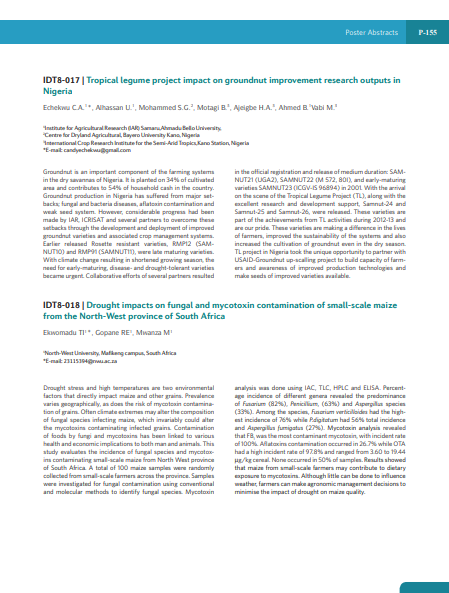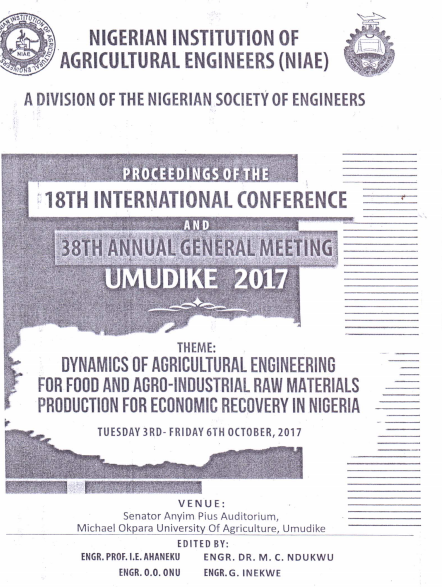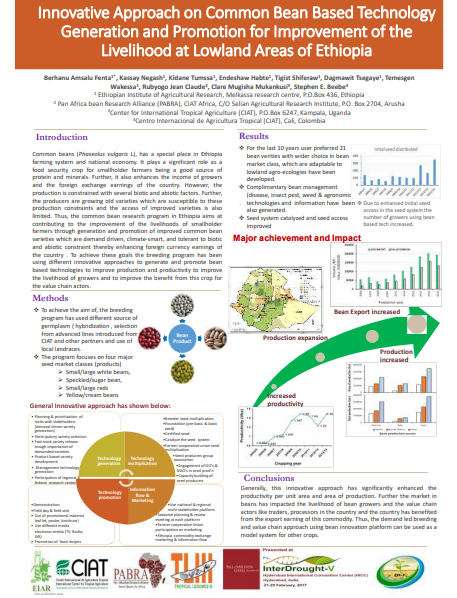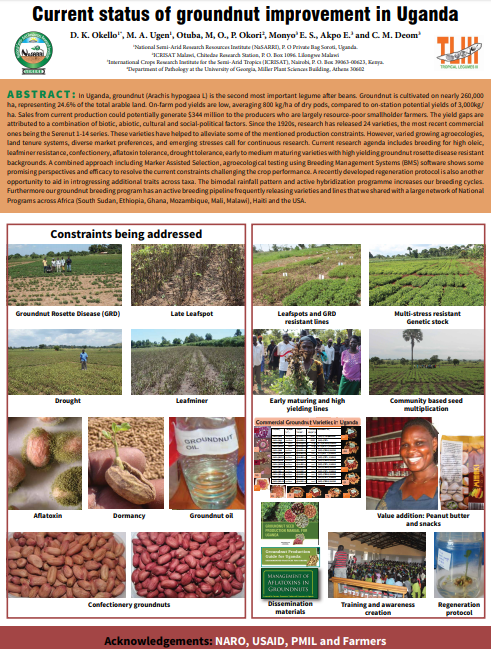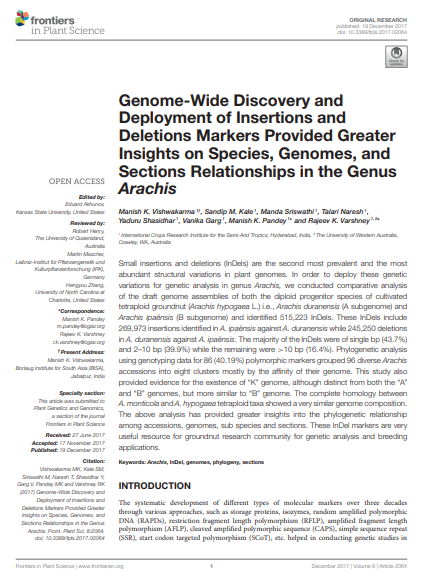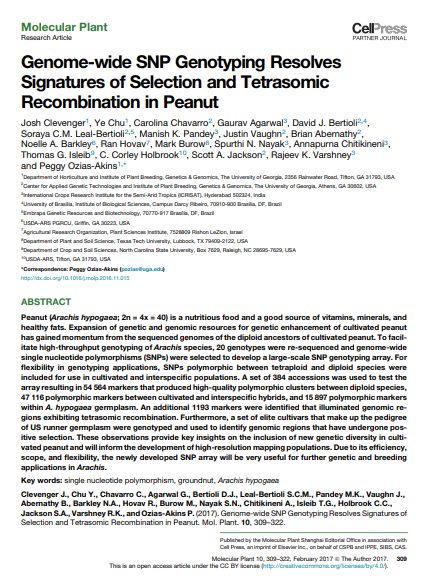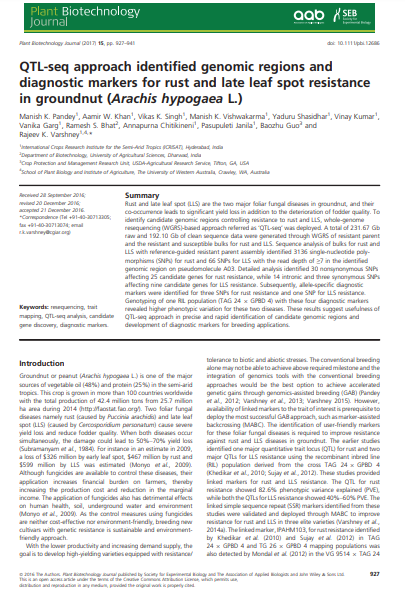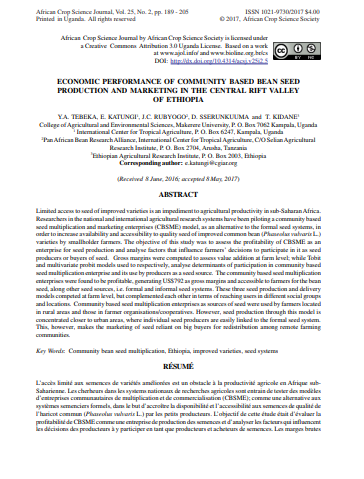Resource Center
This Resource Center collates a large number of publications related to the Tropical Legumes projects. A summary provides a quick overview of each resource and a longer description is included when you click on the ‘Read more’ button. You can use the ‘Search’ field on the left or use the drop-down menus and the ‘Submit’ button to narrow down your search.
The Tropical Legume project’s impact on groundnut improvement research outputs in Nigeria
This poster abstract details the impacts of the Tropical Legumes projects on groundnut production and productivity in Nigeria.
Project: TLIII
File type: PDF (117.63 KB)
Evaluation of an animal drawn groundnut digger for improved productivity of groundnut farmers in semi-arid West Africa
This conference paper presents the results of a field experiment conducted with two groundnut varieties to measure the operational performance and the effectiveness of an animal drawn groundnut digger on pod, fodder loss and pod loss.
Project: TLIII
File type: PDF (3.48 MB)
An innovative approach to common bean-based technology generation and the promotion of improved livelihoods in the lowland areas of Ethiopia
This poster describes the different approaches – including hybridization and selection from advanced lines – that Ethiopia’s common bean research programs has adopted to fast-track variety evaluation and registration.
Project: TLIII
File type: PDF (160.09 KB)
Current status of groundnut improvement in Uganda
This poster discusses methods for improving groundnut yield in Uganda, such as Marker Assisted Selection for high oleic breeding and BMS for Digitalization of data capture, management, analyses and storage.
Project: TLIII
File type: PDF (1.55 MB)
Registration of ‘Serenut 6T’ Groundnut
This article describes the characteristics of ’Serenut 6T’ (Reg. No. CV‐136, PI 682726), a high‐yielding, Spanish‐type groundnut (Arachis hypogaea L. subsp. fastigiata var. vulgaris ) with two seeds per pod. Serenut 6T was released in 2010 by the National Semi‐Arid Resources Research Institute, Soroti, Uganda.
Project: TLIII
File type: PDF
Genome-wide discovery and deployment of insertions and deletions markers provided greater insights on species, genomes, and sections relationships in the genus Arachis
This study provides significant insights into the phylogenetic relationship among accessions, genomes, sub species and sections. These InDel markers are a useful resource for the groundnut research community – for genetic analysis and breeding applications.
Project: TLIII
File type: PDF (2.73 MB)
Genome-wide SNP genotyping resolves signatures of selection and tetrasomic recombination in peanut
To facilitate high-throughput genotyping of Arachis species, 20 genotypes were re-sequenced and genome-wide single nucleotide polymorphisms (SNPs) were selected to develop a large-scale SNP genotyping array.
Project: TLIII
File type: PDF (2.07 MB)
Development and evaluation of a high density genotyping ‘Axiom_Arachis’ array with 58K SNPs for accelerating genetics and breeding in groundnut
The article discusses the development of a high-density SNP array ‘Axiom_Arachis’ with 58 K SNPs and deminstrates its utility in a groundnut genetic diversity study.
Project: TLIII
File type: PDF (3.50 MB)
QTL-seq approach identified genomic regions and diagnostic markers for rust and late leaf spot resistance in groundnut (Arachis hypogaea L.)
The results presented in this study suggest the usefulness of a QTL-seq approach for the precise and rapid identification of candidate genomic regions and the development of diagnostic markers for breeding applications. The approach was applied to identify genomic regions and diagnostic markers for rust and late leaf spot resistance in groundnut
Project: TLIII
File type: PDF (1.43 MB)
Economic performance of community based bean seed production and marketing in the central rift valley of Ethiopia
This study assesses the profitability of the community based seed multiplication and marketing enterprises (CBSME) model as an enterprise for seed production and analyses factors that influence farmers’ decisions to participate in it as seed producers or buyers of seed.
Project: TLIII
File type: PDF (117.67 KB)


